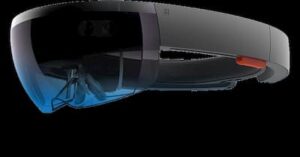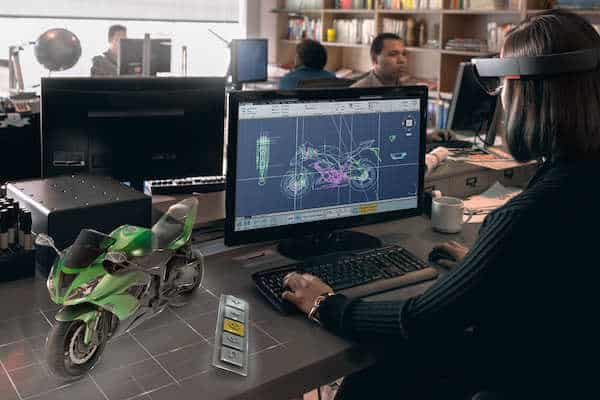In recent times, TV shows have been so inspiring that they made me think about how the future is shaped by adding new technology. Once we realise that, it won’t be science fiction anymore, but it will be reality. The entire generation expects certain things from future technology.
Additionally, the movies feature pieces of imaginary technology that later become a reality. It comes with a compact communications device, face-to-face voice chat, and other voice recognition. It uses a few concepts that mostly appear on the show in the real world. Talking about Holograms, it’s another instance of a technology that appeared in the movie and uses one piece of tech. The companies are continuously trying hard to develop a better design.

Oculus Rift and other augmented reality combined with Google Glass are the closest to bringing holograms into the world.Moving on, Microsoft’s Kinect developed a new platform that brings a simulated reality into both the workplace and living rooms. This new system is called HoloLens, which takes the shape of a pair of goggles rather than a holo suite. Unlike Oculus Rift, HoloLens does not attempt to trick your brain into thinking it’s someplace else. At the same time, it uses augmented reality (AR) to overlay holograms into your everyday space.
To use it every day, we add holograms everyone uses, from mechanics to brain surgeons. Some teachers find numerous ways to leverage holographic technology at every level of education. No doubt, there is an entertainment industry that might discover ways to use the technology for video games. We know it’s cool, but 3D printing is a king. What do you think about why we care about the HoloLens? HoloLens comes with new opportunities for 3D design. It sketches 3D images on a 2D surface with the HoloLens, designers, and engineers that design and develop using 3D parts in 3D.
Microsoft realises how much potential it needs to design the new platform. It includes instances for 3D design, including demos and other video marketing. One shouldn’t be surprised if the HoloLens shipped with 3D design software comes with haptic feedback tools. Users can add a pair of haptic gloves that suddenly comes with the ability to mould new parts, including a 3D mouse or stylus.
The Possibilities of HoloLens for Engineering Design
Design
The design of HoloLens is inspiring. Also, the design engineers will go beyond traditional 3D monitors that are controlled via mouse or touch. It gives immersive 3D in the real world that uses gestures and voice. Holograms allow to visualise how something would look in the physical world. It can benefit of 3D editing and authoring capabilities, mimicking how you would interact with something in real life.
We create a physical mock-up or prototype just by using foam, clay and various other mediums for modelling. This is what we design with HoloLens. It comes with more tools and fewer constraints, adding it to the real world. One can share it with all holograms by collaborating it remotely. Users can even turn them into physical objects and HoloStudio’s 3D print compatibility.
Fix
To think about all the possibilities, one needs to find the field service and repair the products and machines. Withstanding next to an aircraft or vehicle, users can have digital instructions pinned as holograms. The 3D animation within the actual physical context available right in front of you brings remote colleagues or advisors along with HoloNotes on Skype. It allows them to see the environment from their tablet to troubleshoot and collaborate on a repair on the spot. The user has to draw instructions that appear as animations and helps through walk a new process.
Simulate
It comes with new ways to learn the powerful capability of HoloLens. In both field and design service training scenarios, users can learn, visualise and examine in 3D. Additionally, one can understand how a product works in the actual environment. It’s a different inspection performed on a product or individual tests that meet the product with safety standards. Moreover, it simulates an unsafe environment that practices what you’d do in that situation.
3D Design Service
For additional information about professional CAD drafting services, connect to Australian Design and Drafting Services company. Call on 1800 287 223 or 07 3149 3547 today and discuss your requirements.
What are 3D Design Services?
3D design services involve the creation of three-dimensional digital models, visualizations, and simulations to depict objects, products, buildings, or environments in a virtual space. These services are offered by professionals and firms specializing in computer-aided design (CAD), 3D modeling, rendering, and animation.
Here are some common types of 3D design services:
Product Design: 3D design services are often used to develop virtual prototypes of products, allowing designers and engineers to visualize, iterate, and refine their designs before manufacturing. This includes consumer products, industrial equipment, machinery, automotive components, and more.
Architectural Visualization: Architects and real estate developers use 3D design services to create realistic renderings and walkthroughs of buildings, interiors, and landscapes. These visualizations help clients and stakeholders better understand the design concept, spatial layout, and aesthetic appeal of architectural projects.
Interior Design: Interior designers utilize 3D design services to create virtual models of interior spaces, including residential homes, commercial offices, retail stores, restaurants, and hospitality venues. These models allow designers to experiment with different layouts, furniture arrangements, materials, and lighting effects to achieve the desired ambiance and functionality.
Animation and Visual Effects: 3D design services are employed in the entertainment industry to produce animated films, video games, special effects, and virtual simulations. This involves creating lifelike characters, environments, and dynamic sequences through 3D modeling, texturing, rigging, animation, and rendering techniques.
Engineering and Prototyping: Engineers and manufacturers use 3D design services to develop detailed models of mechanical components, assemblies, and prototypes. These models facilitate design analysis, testing, and validation of engineering concepts, helping to identify and resolve potential issues early in the product development process.
Medical and Scientific Visualization: In the fields of medicine and science, 3D design services are utilized to create anatomical models, surgical simulations, and scientific visualizations. These models aid in medical education, research, diagnosis, treatment planning, and public outreach.
Virtual Reality (VR) and Augmented Reality (AR): With the growing popularity of VR and AR technologies, 3D design services are increasingly used to develop immersive experiences and interactive applications. This includes virtual tours, training simulations, gaming experiences, and marketing presentations that leverage the capabilities of VR and AR platforms.
What is 3D services?
“3D services” is a broad term that encompasses a range of offerings related to three-dimensional (3D) design, modeling, visualization, and animation. These services are provided by professionals, agencies, studios, or freelancers with expertise in computer-aided design (CAD), 3D modeling software, rendering, and animation techniques. Here are some common types of 3D services:
3D Modeling: This involves creating digital representations of objects, products, characters, environments, or architectural structures in three-dimensional space. 3D modelers use specialized software to sculpt, manipulate, and refine geometric shapes, surfaces, and textures to achieve the desired form and detail.
3D Rendering: Rendering is the process of generating photorealistic images or animations from 3D models. Render artists use rendering software to simulate lighting, materials, shadows, reflections, and other visual effects to create lifelike representations of virtual scenes.
Architectural Visualization: Architectural firms and real estate developers utilize 3D services to create visualizations, renderings, and virtual tours of architectural designs. This helps clients and stakeholders visualize proposed buildings, interiors, landscapes, and urban developments before construction begins.
Product Visualization: Companies in various industries, such as consumer goods, automotive, electronics, and furniture, use 3D services to create digital prototypes and marketing visuals of their products. This includes 3D product modeling, rendering, and animation for promotional materials, packaging, websites, and advertisements.
Animation and Motion Graphics: Animators and motion graphics artists employ 3D services to produce animated sequences, visual effects, and motion graphics for films, television shows, commercials, video games, and multimedia presentations. This involves character animation, rigging, keyframing, particle effects, and compositing techniques.
Virtual Reality (VR) and Augmented Reality (AR): With the rise of VR and AR technologies, 3D services are increasingly used to develop immersive experiences and interactive applications. This includes creating 3D models, environments, simulations, and interactive interfaces for VR/AR platforms, training programs, educational content, and marketing campaigns.
Medical and Scientific Visualization: In the fields of medicine, biology, and science, 3D services are employed to create anatomical models, medical illustrations, scientific visualizations, and educational materials. This helps researchers, educators, and healthcare professionals visualize complex biological structures, processes, and data.
